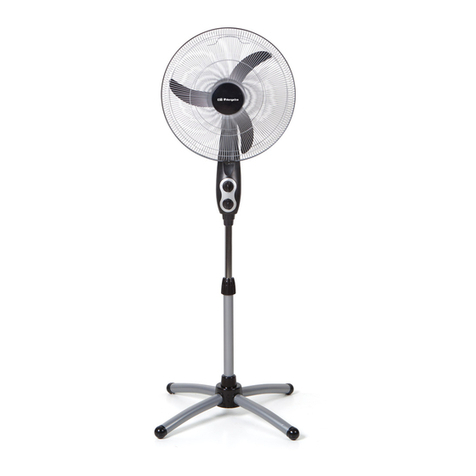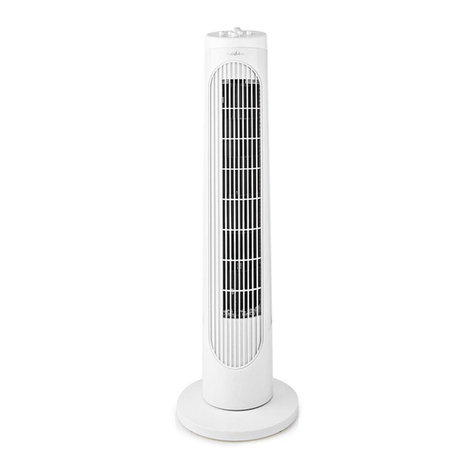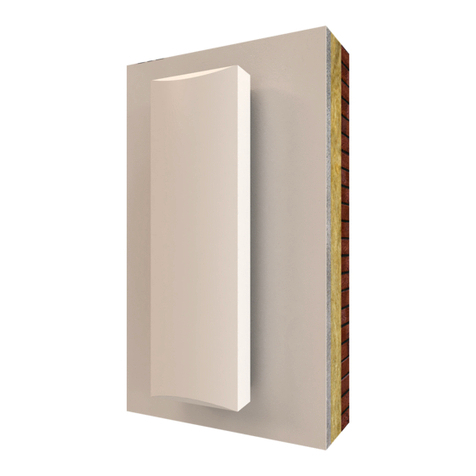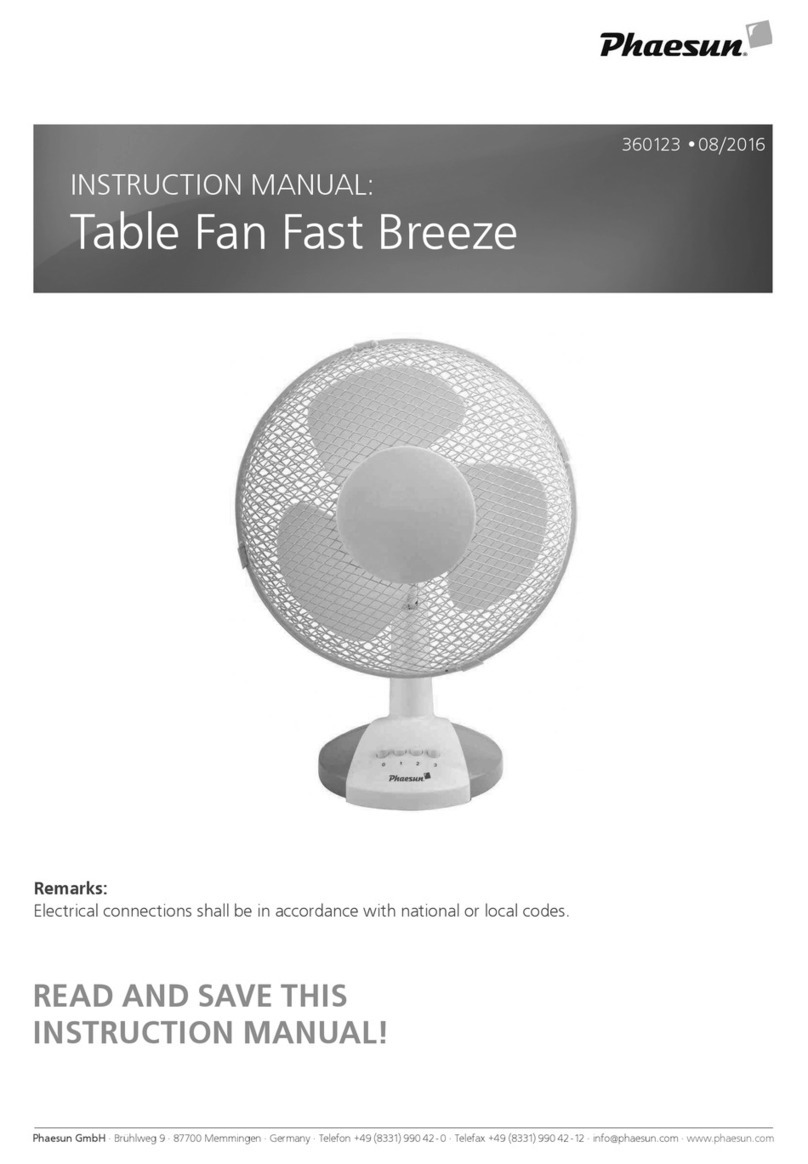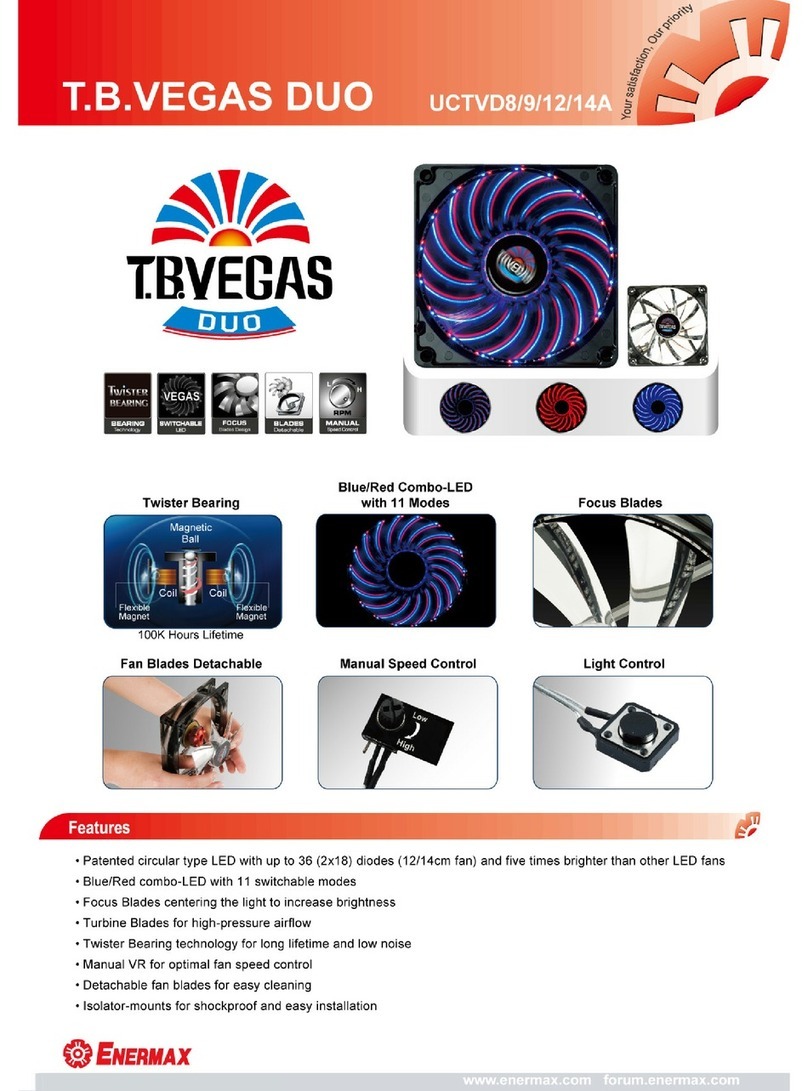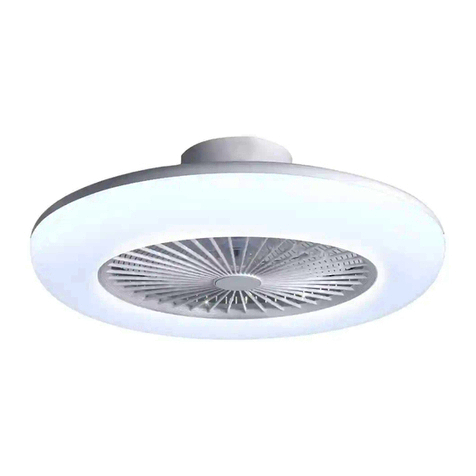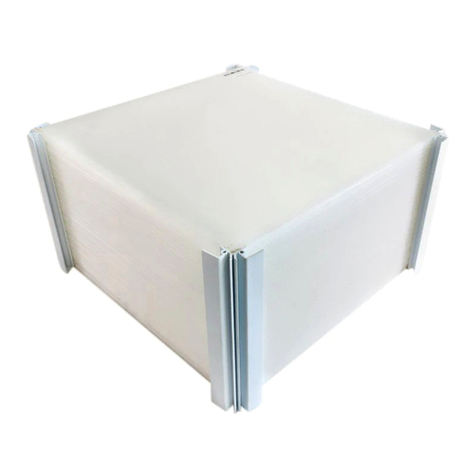Three Sixty The Tropicana TRO54 Series User manual

The Tropicana
Owner’s Manual
Please read and keep these instructions as they contain assembly,
warranty, maintenance and service information.
Version:
Date:
1.1
August 2020
54” / 138cm AC Ceiling Fan
Model No. TRO54**
72” / 183cm AC Ceiling Fan
Model No. TRO72**
Net Weight: 12 kg
Gross weight: 14 kg
Net Weight: 14 kg
Gross weight: 16 kg

2
ThreeSixty Ceiling Fans
Fan Technology That’s Innovative and Reliable
ThreeSixty Ceiling Fans is proud of its range of ceiling fans, accessories and lighting products.
We believe these are the leading products in their category, reecting over 40 years collective
Australian experience in design, development, manufacturing and distribution of electronics
and electrical equipment.
The Tropicana series of fans are decorator style AC motor powered ceiling fans intended to
operate for long periods and provide strong airow under the fan and in its vicinity.
Distinctly dierent, the Tropicana caters to a variety of climates and the AC motor is ecient
and ultra-reliable, while being optimised for use in living and family rooms.
Our manufacturing is subject to strict quality control and we back our products with a plain-
English warranty. Any problem caused by a fault in the product will be xed or replaced with
the least possible inconvenience.
We welcome feedback and suggestions. By listening to our customers we aim to continuously
improve our products and services.
Electricians and installers:
We are here to help you. Please call our
support line if you have any questions or
need assistance with installing or wiring
the product.
Customers and purchasers:
Please call us if you have any questions
about your fan or would like advice on the
best way to use your fan to save energy.
ThreeSixty Fans Support can be contacted by calling 1300 469 326, visting our website at
https://360fans.com.au or emailing our team at support@360fans.com.au

3
Important Safety Instructions
1. Read your owner’s manual and safety information before installing your new fan. Review the accompanying
assembly diagrams.
2. Before servicing or cleaning unit, switch power o at fuse box / circuit breaker and lock box (disconnecting
means to prevent power from being switched on accidentally).
3. Be careful of the fan and blades when cleaning, painting, or working near the fan. Always turn o the power
to the ceiling fan before servicing.
4. Do not insert anything into the fan blades while the fan is operating.
5. Do not operate reversing switch until fan blades have come to a complete stop.
6. Do not dispose of electrical appliances as unsorted municipal waste, use separate collection facilities.
7. Contact your local government for information regarding the collection systems available.
8. If electrical appliances are disposed of in landlls or dumps, hazardous substances can leak into the groundwater
and get into the food chain, damaging your health and well-being.
9. This appliance is not intended for use by persons (including children) with reduced physical, sensory or mental
capabilities, or lack of experience and knowledge, unless they have been given supervision or instruction
concerning use of the appliance by a person responsible for their safety.
10. Children should be supervised to ensure that they do not play with the appliance.
WARNING: To avoid re, shock and serious personal injury, follow these instructions.
Additional Safety Instructions
1. To avoid possible shock, be sure electricity is turned o at the fuse box before wiring, and do not operate fan
without blades.
2. All wiring and installation procedures must comply with AS/NZS 3000 Wiring Rules and any other local
regulations. The ceiling fan must be grounded as a precaution against possible electrical shock. Electrical
installation must be made by a licensed electrician.
3. The fan base must be securely mounted and capable of reliably supporting at least four times the weight
of the ceiling fan. The installation and replacement of the suspension system must be completed by the
manufacturer, its service agent or a suitably qualied person.
4. The fan must be mounted with the fan blades at least 2.1 meter (lowest edge) from the oor to comply
with safety regulations and to prevent accidental contact with the fan blades.
5. Follow the recommended instructions for the proper method of wiring this ceiling fan.
6. This fan must be installed with an isolation switch or a device to disconnect all poles.
WARNING: This product is designed to use only those parts supplied with this product and/or accessories
designated specically for use with this product. Using parts and/or accessories not designated for use with this
product will void your warranty and could result in personal injury or property damage.
WARNING: To reduce the risk of personal injury, do not bend the blade bracket (ange or blade holder) when
installing the brackets, balancing the blades, or cleaning the fan. Do not insert foreign objects in between rotating
fan blades.
WARNING: This fan MUST be installed with an easily accessible isolating device to disconnect all poles of the fan
from the main supply.
WARNING: If unusual oscillating movement is observed, immediately stop using the ceiling fan and contact the
manufacturer, its service agent or suitably qualied persons.
IMPORTANT: This product must be
installed by a licensed electrician and
comply with AS/NZS 3000 Wiring Rules
and any other local regulations.

4
Supplied parts
Tools and materials required
Installation issues, missing or damaged parts
• One AC motor assembly with switch cup
• One hanger bracket tted with terminal block
• One top canopy, boss cover and dress ring
• One set of blades
• One screw pack
• One installation booklet / owner’s manual
• One wall control with speed capacitor (without wall plate)
• Phillips screwdriver
• Blade screwdriver
• Small electrical screwdriver
• Electrical pliers
• Step ladder
• Wiring supplies as required by current electrical practices
• In-line crimps or other suitable connectors if a downrod is to be tted - wiring loom(s)
included with accessories
Before starting the assembly and installation of your fan please ensure the safety instructions
have been read and understood.
If you have any diculty installing your fan or if you are unfortunate enough to nd that your fan
has been dispatched with parts missing or damaged, please contact our help line on 1300 469
326. We will provide help and/or replacement parts to you immediately.
In any communication with us please quote your model number and nish (colour) of the unit,
along with as much information on the missing or damaged part(s) as possible, referring to the
exploded fan view view and parts on page 5.

5
Exploded Fan View & Parts
CEILING
HANGER BRACKET
METAL WASHER
SPRING WASHER
WOOD SCREW
WALL SWITCH &
CAPACITOR
HANGER BALL
CANOPY
MOTOR ASSEMBLY
BLADE SCREWS
BLADE
DOWNROD
DRESS RING
MOTOR HOUSING CAP
BLADE WASHERS
BLADE HOLDER SCREWS
BLADE HOLDER
SWITCH CUP
CIR CLIP
COTTER PIN
SWITCH CUP
MOUNTING PLATE
HOUSING SCREW

6
Tab
Installing the fan
1. Hanger bracket installation
All electrical work should only be undertaken after disconnection of the power by removing
fuses or turning o the circuit breaker to ensure all poles isolation of the electrical supply.
The following steps will guide you to a successful installation:
1. Hanger bracket installation
2. Seat downrod into hanger bracket
3. Complete ceiling fan wiring
4. Install ceiling canopy
5. Assemble and install the blades
6. Connect the switch cup 9 pin connectors
The hanger bracket should be screwed on to a rm at
surface. The xing location must be able to withstand
four times the static weight of the fan. If you have any
doubts as to the ability of your intended xing location
to be able to withstand this loading, please contact
our service help-line or another competent authority
to advise you. In most situations two wood screws
screwed into a wooden joist is more than adequate to
support your ceiling fan.
The hanger bracket should be screwed onto the joist
with the two wood screws provided. Fixings must screw
into a joist and not just the plasterboard.
2. Seat downrod into hanger bracket
Place the hanger ball into the hanger bracket. Ensure the
tab on the hanger bracket is locked into the slot on the
ball. (This is important to ensure the fan will not wobble or
rotate and the weight of the fan is properly supported).

7
3. Complete ceiling fan and wall control wiring
WIRING INSTRUCTIONS: Ensure power is safely isolated before attempting any wiring.
Your fan is supplied with a rotary wall control as standard, however accessory remote controls
are available. Refer to remote control wiring instructions for installing the remote receiver.
IMPORTANT - This appliance must be earthed.
Step 2: Connect Hanger Bracket to Fan Connector
Check inside the 9 pin connectors to ensure no internal
pins are loose or pushed in. Securely attach the 9-pin
connector from the hanger bracket to the wire harness
socket of the hanger ball.
Step 1: Connect AC Power Supply to Terminal Block
Connect the AC household power supply wires from the
ceiling to the Hanger Bracket’s terminal block. Connect the
REDFANactivewiretotheconnection labelled ‘L1’. Connect
the RED LIGHT active wire to the connection labelled
‘L2’. Connect the BLUE neutral wire to the connection
labeled ‘N’. Connect the YELLOW/GREEN earth wire to
the connection labeled with the Earth symbol.
Green/Yellow (Earth)
from hanger bracket
Terminal Block
L2
L2
N
N
Red (Light Active)
Black (Neutral)
Green/Yellow (Earth)
AC
Supply
Cable
Red (Fan Active)
Red (Active)
Red (Active) Running
Capacitor
Orange ( Light Active )
Blue ( Neutral )
Green/Yellow (Earth) from fan
Brown
Blue
Purple
Rotary
Switch
1
2
3
L1
L1
Brown ( Motor Active )
Step 3: Install the wall control (rotary) switch
1. Route fan supply wiring to desired location on the wall.
2. Ensure wiring connections as shown in the wiring
diagram. The Acitve (Red) supply wire must be
connected to termincal “C” on the rotary switch. Return
switched wire to ceiling fan to be connected from
terminal “1” on the rotary switch to “L1” terminal on the
termincal block.
INSTALLATION NOTE: The “O” and the small corner cut-
out on the front of the switch mechanism must be at the
top and top left position respectively.

8
4. Install the ceiling canopy
NOTE: This step is applicable after the necessary wiring is completed.
Step 1: Loosen and remove canopy screws
Loosen one canopy screw and completely remove the
second canopy screw.
Step 2: Install the ceiling canopy
1. Slide the ceiling canopy cover up and over the hanger
bracket, positioning the remaining screw inside the key
slot.
2. Twist the canopy cover counter clockwise to lock the
canopy screw into the key slot and also revealing the
second screwl hole.
3. Insert and tighten the second canopy screw to securely
lock the ceiling canopy in place.
Step 3: Install the canopy dress ring (screw cover)
1. Slide the dress ring up and over the two canopy screws.
2. Securely attach and tighten the canopy screw cover over
the canopy screws in the hanger bracket utilising the
keyslot twist-lock feature.
5. Assemble and install blades
Attach the blade holders to each of the
blades as shown. Ensure the blade is facing
down, the blade holder is on the bottom of
the blade and the blade screws and blade
washers are installed from the top of the
blade.
Step 1: Attach the blade holders to each blade

9
Install the blade holders onto the bottom of
motor - do not fully tighten screws until all
blade holders have been installed.
Step 2: Attach the blade holders to motor
5. Connect and install switch cup
Step 1: Connect switch cup to motor
1. Loosen but do not remove screw marked ‘1’.
2. Completely remove screws marked ‘2’ and ‘3’, keep
screws in a safe spot for Step 2.
3. Connect the 9-pin connector on the switch cup to
the 9-pin connector coming from the motor.
Step 2: Attach the switch cup to the motor
1. Slide the switch cup up and over the bottom
of the motor, lining up the remaining screw
with the keyslot in the switch cup.
2. Twist the switch cup to lock into place and
tighten the screw.
3. Re-insert the second and third screws and
fully tighten to lock the switch cup into place.

10
Troubleshooting
Fan will not start
• Check that the reversing switch is pushed into its Summer or Winter position.
• Check wire connections in the wall swtich and terminal blocks, ensure all wires are making
proper contact.
• Check any wiring looms to ensure the interal pins are making full contact.
Fan speed not corresponding to the wall controller
• Check the speeds on the wall controller have been wired correctly (as per wiring diagram on
page 7) and are making proper contact.
• Check wires in the terminal block are connected properly, connection wires should be
stripped back at the connection point and unused wires should be sealed and capped o.
• Check that the reversing switch is pushed into its Summer or Winter position.
Fan is wobbling
• Check the hanger ball joint slot is locked into the hanger bracket groove.
• Make sure blades are a matching set; the letters on matching sets of blades should be
identical with the numbrs varying within 3 grams of each other.
• Check blade screws are tightened rmly. If necessary use balancing kit provided to settle
the wobble.
Fan is noisy
• Check all screws and parts are secured rmly. Ensure there are no loose parts moving inside
the motor housing.
• Make sure the fan is installed with a ThreeSixty wall controller only, do not use solid state
controllers as they can cause unpleasant motor noises.
Care and cleaning
The motor has permanently sealed bearings so no lubrication is necessary.
Periodic cleaning of your new fan is recommended (particularly the blades). The painted surfaces
of your fan have been nished to minimize any discolouration or tarnishing. Therefore use a soft
brushed or lint free cloth to avoid scratching the surface.
Do not use water or chemicals when cleaning your fan motor as this could damage the surfaces.

11
ThreeSixty Fans - Plain English Warranty Terms
Our goods come with guarantees that cannot be excluded under the Australian Consumer Law. You are entitled
to a refund or replacement for a major failure and for compensation for any other reasonably foreseeable loss or
damage. You are also entitled to have the goods repaired or replaced if the goods fail to be of acceptable quality
and the failure does not amount to a major failure.
Mechanical and Structural Components
Your Product is covered against mechanical and structural defects that prevent it from working by a limited 36
month on-site warranty. This warranty covers only the product itself and excludes workmanship or materials
related to its installation or any modications. A major failure may be, for example, a motor defect preventing a
product from operating shortly after it was rst installed or if it was damaged while in the original packaging. If the
product stops working due to a mechanical or structural defect within the rst 36 months we will repair or replace
the product at our discretion.
Electronic Components
Your Product is covered against electronic defects that prevent it from working by a limited 12 month on-site
warranty. This warranty covers only the electronics supplied with the product and excludes workmanship or
materials related to its installation or any modications. A major failure may be, for example, a power module that
failed shortly after it was rst installed or if it was damaged while in the original packaging. If the product stops
working due to an electronic defect within the rst 12 months we will repair or replace the electronic part at our
discretion.
Compensation for reasonably foreseeable loss
Compensation normally comprises us paying associated labour costs to replace the defective product if it’s
installed within a reasonable distance from our repair agent. If beyond a reasonable distance (30km) you can
arrange your own electrician and we will compensate you for this up to a maximum of $115.50 inc GST. Note, we
do not pay extra for extended travelling time or additional costs when the job requires a longer than average time
to complete.
To prevent or limit costs you may incur for service calls, you must notify us of the intention to use your own
contractor and not engage one until we have spoken to them (to arrange parts that may be required). If the
problem is not a defect covered by our warranty terms you will have to pay all costs. To reduce cost and
inconvenience for all involved we will do our best to diagnose the fault and supply parts before the contractor visits
the site.
Eligibility for In-Home Service Calls
Hard wired electrical products must (by law) be installed by a licensed electrician. To obtain in-home warranty service
you must be able to provide a copy of the installing electricians invoice or the Certicate of Compliance
given to you when the product was rst wired up and tested. If you cannot provide this information we limit our
warranty to repair or replacement of the product at our workshop and you will bear the costs of removal, shipping
to us and reinstallation. We will pay the freight to send the rectied unit back to you.
Access to products
Products installed on ceilings 4m and above may require special access equipment or WH&S measures. All costs
for this equipment must be borne by the site owner and the ceiling height given when booking a service call. If a
service agent chooses not to access a product installed at height due to WH&S concerns the owner must remove
and reinstall the product at their own expense.
Isolation Switches
Australian Standards require our instructions to state an isolation switch must be tted. This allows the product
to be physically switched o in case of faults or to prevent damage from surges, lightning, etc. Emergency
disconnection and/or remote control re-programming that can’t be performed due to lack of an isolation switch is
not covered by warranty.
SHOULD THERE BE ANY INSTALLATION ISSUES OR DEFECTS PLEASE IMMEDIATELY CALL OUR
SUPPORT HELP LINE ON 1300 469 326 FOR ASSISTANCE AND ADVICE. DO NOT ATTEMPT TO
UNINSTALL OR REMOVE THE PRODUCT FROM THE CEILING UNLESS SPECIFICALLY ADVISED TO BY
THREESIXTY FANS AS THIS WILL CAUSE DELAYS DIAGNOSING AND RESOLVING THE ISSUE.

12
ThreeSixty Fans - Plain English Warranty Terms
Commencement
The warranty period begins from date of purchase and in-home warranty service is available only at the site of
original installation. If the product is installed as part of a project or development the warranty period commences
when the product was delivered to the site.
Damage
Damage from Force Majeure, electrical surges, wind, rain, lightning, power grid uctuations, water ingress,
condensation or use with incompatible power sources will not be rectied under warranty. Likewise solid state or
dimmer type speed controls may damage ceiling fans or cause them to make unusual noises. Genuine parts and
advice are available through our online and telephone support services.
Cosmetic defects
Carefully inspect your product prior to installation and notify us as soon as possible if there are cosmetic defects.
Cosmetic defects are generally not covered by warranty unless present when the product is initially unpacked.
Damage from being struck by objects or not being kept clean is not covered by warranty.
Corrosion
Deterioration of nishes, including rusting, pitting, corrosion, fading, tarnishing or peeling is not covered by warranty
beyond six months. Products specied as corrosion resistant or made from Stainless Steel are not corrosion
proof and will discolour or deteriorate if not cleaned. As a guide, maintain your product as you would your kitchen
appliances (clean every 3 months).
Noise
Signals sent through the power grid by the electricity supplier may cause intermittent noises in your product.
These noises are not the result of a fault and lters to reduce this noise may be available at additional expense.
Clicking, ticking and creaking noises from fans are usually caused by the mounting bracket not being correctly
attached or when blades screws are loose. Only use the hardware provided to install ceiling fans. If the mounting
bracket is attached using counter-sunk screws it will work loose and cause unwanted noise and movement in your
fan. Wooden bladed fans may need their blade screws periodically tightened. Unless a product is defective noise
will not be rectied under warranty.
Wobbling
Wobbling is generally not caused by a defective fan but by air currents in the room. After a fan has been running
for a long period it will cause air currents to form and, depending on the shape of the room and its furnishings, the
air returning to the fan may be uneven.
Improper mounting will also cause a fan to wobble. Every mounting bracket screw must be secured to solid
materials in the ceiling. Metal C section rafters may need to be doubled to form a box section to prevent exing.
Foam sandwich ceiling panels will require reinforcing to stop exing. Unless a product is defective wobbling will
not be rectied under warranty.
Airow
The amount of airow produced by a fan is dependent on where it’s installed because room shape, mounting
height and furnishings will aect the perceived air movement. A product is deemed to be functioning normally if it
is running within 15% of the specied RPM when installed.
Purchase Date:
Product Model:
License Number:
Light Model:
Ceiling Height:
Seller Name:
Installed By:
Contact number:
Remote Control:
Isolation Switch: Yes No
This manual suits for next models
1
Table of contents
Other Three Sixty Fan manuals

Three Sixty
Three Sixty Kensington DC KEN720BLED Setup guide

Three Sixty
Three Sixty Kirra KIR100 Series User manual
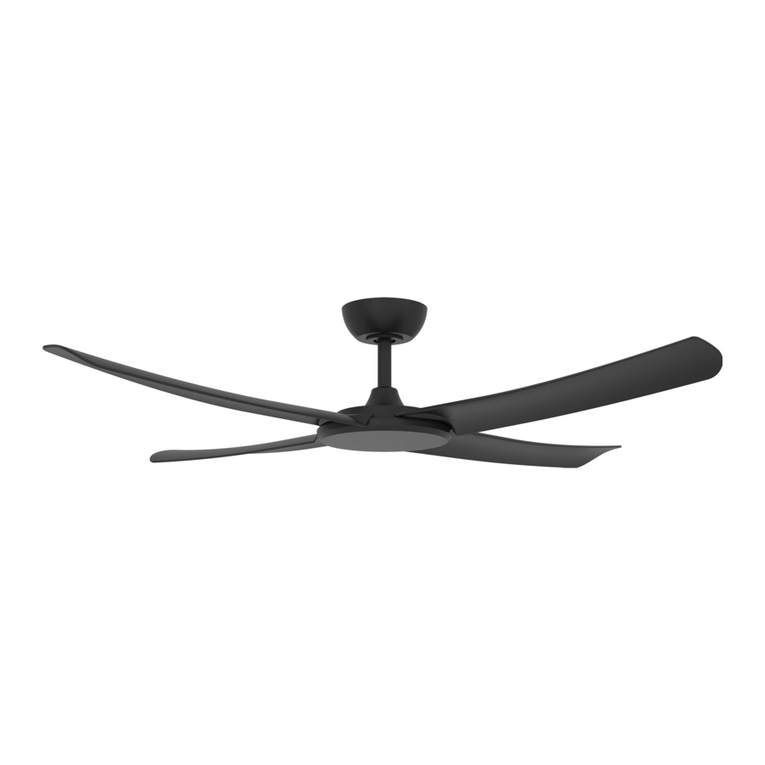
Three Sixty
Three Sixty FlatJet FLA56 Series User manual
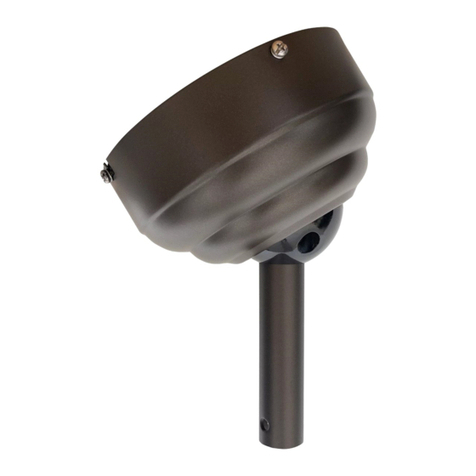
Three Sixty
Three Sixty SC45 Series User manual
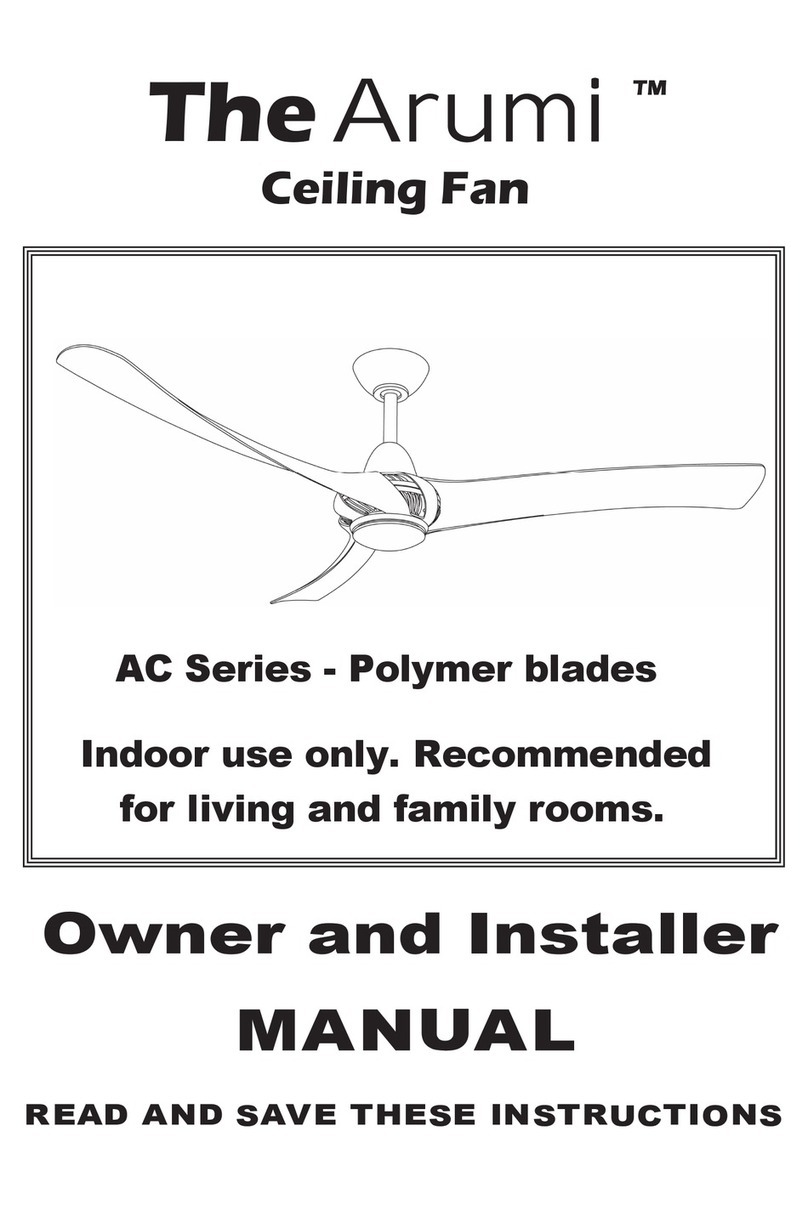
Three Sixty
Three Sixty Arumi AC Series User manual

Three Sixty
Three Sixty Kute DC KUT44 Series User manual
Popular Fan manuals by other brands

moistureMASTER
moistureMASTER HX User guide lines

Hunter
Hunter 51734 installation manual
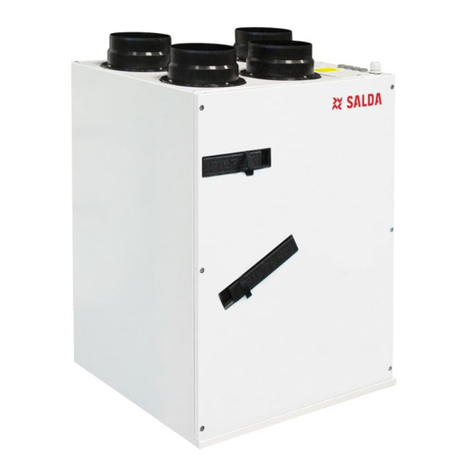
Salda
Salda SMARTY XV Series manual
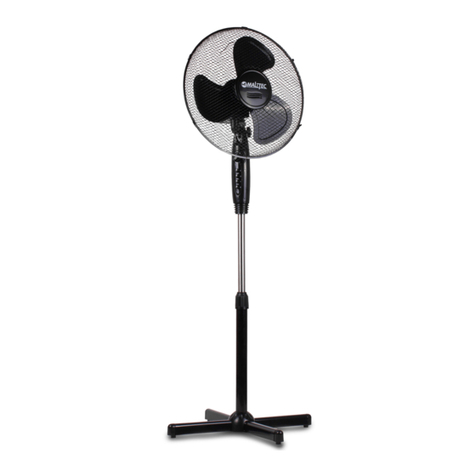
MALTEC
MALTEC WL85-B Operation and maintenance manual

Nederman
Nederman VAC 12 instruction manual

Triangle Engineering of Arkansas
Triangle Engineering of Arkansas PC 3021 Direct Drive Portable Coolers owner's manual



